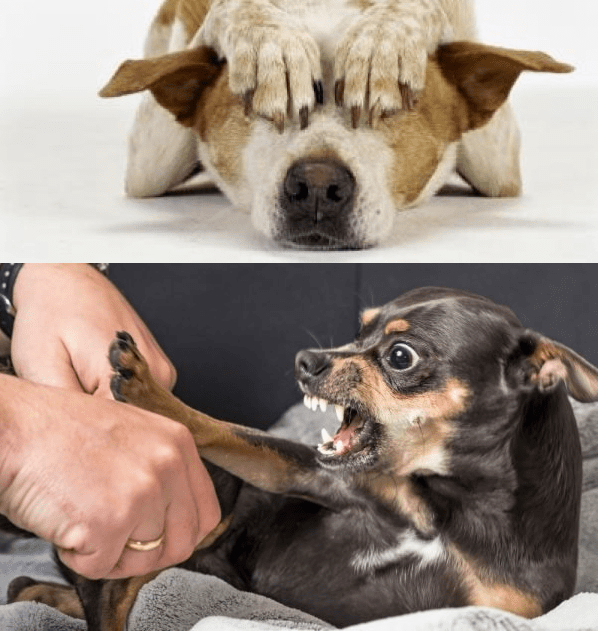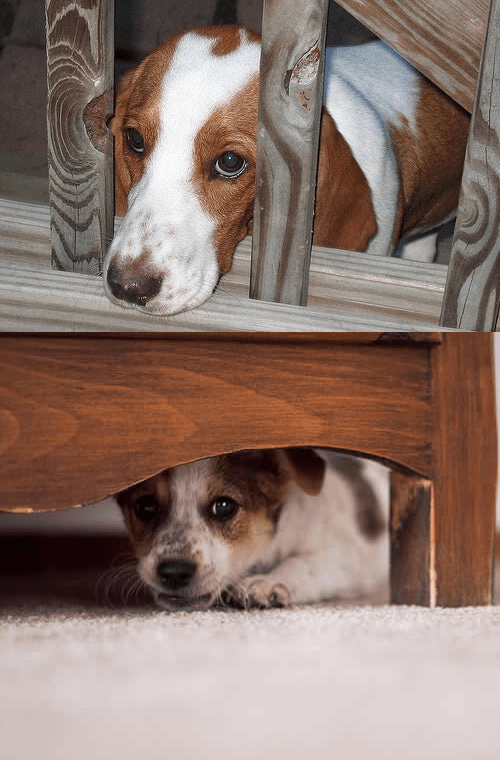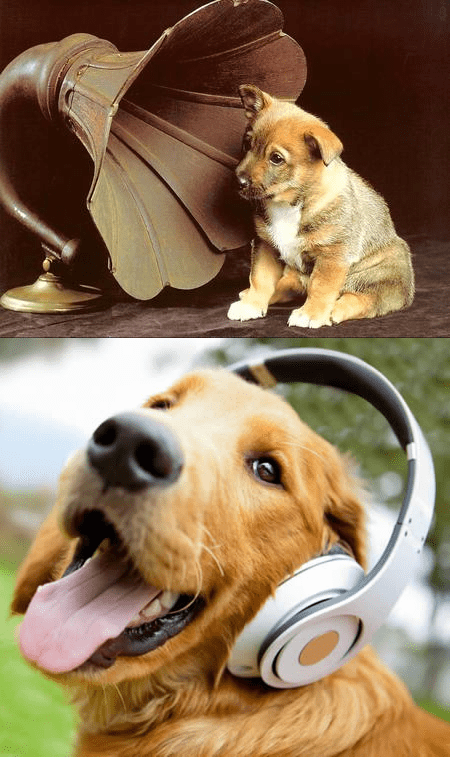Calming music for dogs. An option for anxiety in dogs. Have you ever wondered if dogs like music?, If they are able to enjoy a good melody?, Does music have any effect on the mood in dogs?, Or more importantly, can music reassure dogs with anxiety?
In this article, we will clear several of these doubts. But we will pay special attention to the effect that music has on dogs with anxiety.
Therefore, it is important that you learn more about anxiety in dogs. We will describe what are the main causes, symptoms and effects of anxiety in dogs because this problem is more common than you think.
What is anxiety in dogs?
Anxiety in dogs is similar to that suffered by humans. It is a state of mind, which causes nervousness, insecurity and restlessness. Therefore, anxiety can become a chronic problem that will cause other health and behavioral problems.
Causes of anxiety in dogs
Not all anxiety pictures have the same background. It is very important to know the reason that leads the dog to have some abnormal behavior. There are many reasons that lead a dog to feel anxiety, although the most common are:

Lack of or poor socialization
Socialization is the process by which the puppy explores and learns from its surroundings. A dog that has had a good socialization will know how to react appropriately to the stimuli of the environment in which it lives. If the dog does not interact with other dogs, animals or people and does not know other environments beyond their home, it is very likely that as an adult they will become anxious every time they have to leave home.
Separation anxiety.
Dogs, are social animals, they need to be part of a group, Thanks to the maintenance of these links, the animals are safer and increase their life expectancy.
However, if a dog has been abandoned and/or abused throughout his or her life, or if he has been separated from his mother before 8 weeks of age, his mental health is more than likely to be altered and he or she has symptoms of anxiety.
Loneliness
Many people who have a dog, work long days and leave their dog alone for a long time, which can be very harmful.
First, loneliness and lack of someone to interact with can lead the dog to boredom. If this routine is repeated continuously, the dog will begin to develop anxiety and, in the worst cases obsessive compulsive behaviors, with the intention of attracting attention or escaping from home.
Fear of noise
The ear of dogs is 16 times more powerful than that of humans. Therefore, it is understandable that if any loud noise explodes it will be annoying and even afraid. However, if your behavior in the face of any slightly loud noise persists or becomes compulsive, it means you have anxiety.
The main reasons why you may have developed misconduct include:
- Traumatic experiences related to some loud noise, such as the near explosion of some firecracker.
- Overprotection: that is usually the exaggerated reaction on the part of the owner whenever there is a loud noise.
Senile dementia
Older or elderly dogs often lose their memory and develop what is known as cognitive dysfunction or senile dementia.
Some of the main symptoms they have are
- Disorientation, it does not recognize its environment and is easily lost.
- Avoid social behaviors, do not allow yourself to caress or accept the caresses of people or other dogs.
- Increased irritability.
- Incontinence: No longer remembers the places where you were doing your needs.
Radical changes
Moving or creating new family members are often stressful times for the dog. These novelties involve changes in the routine of the dog that, if not presented properly can lead to anxiety.
Lack of exercise
Dogs that live in apartments and small flats often have the need to leave to release the excess energy they accumulate while at home all day. However, for work reasons, many people do not have enough time for the dog to exercise enough. When so, dogs look for other ways to output all accumulated energy. Barking, moaning, spinning or jumping like crazy around the house are some examples.
How to tell if my dog has anxiety

Changes in the behavior of a dog with anxiety are a sign of the discomfort it has. Through obsessive-compulsive behavior the dog looks for two things:
- Draw attention to him and warn that there is something wrong.
- Release some of the burden you feel from a situation you can’t control that causes you physical or mental pain.
The main indications that a dog has anxiety are:
Destructive behaviors
Dogs with anxiety often destroy furniture, bite paws from chairs and tables, or smash their own toys. Especially when he’s alone.
Miccionar or defecate at home
Even though they knew how to do their needs away from home, dogs with anxiety often have incontinence problems.
Demand for exaggerated attention
Dogs that fear being alone, abhor the time of farewells, so every time they have the opportunity they seek to be as close to you, and to get it they do not hesitate to tremble and moan until they get the lame in their arms or caresses them.
Ride out of control
If your dog rides objects, people, or other dogs continuously, even when castrated, one of the problems may be anxiety about a situation that’s stressing him out.
Hyperactivity
He jumps, runs and spins around the house all the time, even though he’s gone out. Your behavior may be due to boredom or lack of stimulation.
Exaggerated fear
Some dogs are afraid of other dogs, people and any objects that cross the street. They’re always shivering, with their tails between their legs and as soon as they let go of their strap they run outoriented, or they get between your legs.

This behavior is not only due to shyness, but also hosts some trauma that has left the dog marked or the lack of proper socialization during the first months of the puppy’s life.
Alert status
Anxious dogs with phobia problems and fears often distrust the safety of their environment. They are very frightened by sudden loud noises, such as breaking a balloon or exploding artificial games. Being ready to run at any time is your main weapon. His muscles are tense while constantly monitoring his surroundings.
Excessive licking
Some dogs are looking for quiet ways to get rid of excess energy accumulated during their long hours of loneliness.
Attracting your owner’s attention is also among your goals. That is why in some cases licking can become so exaggerated that they even become injured.
Frequent vomiting and diarrhea
Although anxiety is a state of mind, it can appear to be a physical illness with underre suspected symptoms. Anxiety and stress from loneliness can severely unbalance the health of the dog.
Aggressiveness
Some anxious dogs often get the feeling that everything and everyone around them is a threat to their integrity. Grunting, barking at people, biting or attacking other dogs are the most common symptoms.
After explaining the main causes and effects of anxiety in dogs, it’s time to talk about how music can be an excellent tool to counteract this problem and give your furry friend a better quality of life.
Soothing music for dogs with anxiety.
In recent years, several studies have been carried out with the aim of knowing the effect that music has on dogs. And if music can function as a treatment for anxiety in dogs. In addition, researchers have tried to answer the question, do dogs have musical preferences? Here are some of the most important studies on this topic.
Research conducted in 2002 by psychologist Deborah Wells at Queen’s University belfast, Northern Ireland. It consisted of placing speakers in a shelter where there were 50 dogs. And they randomly played four different types of sounds: human conversations, pop music, classical music and heavy metal. And he observed the effect each sound had on dogs.
Thanks to this study, she discovered that classical music had the greatest calming effect on dogs. When classical music sounded on the speakers, the noise produced by dogs decreased markedly. And a larger number of dogs decided to go to bed. This compared to when they put the other sounds.
Instead, Metallica’s heavy metal seemed to shake the dogs.
Finally, Britney Spears’ pop songs, like human conversations, did not have an observable effect on animals.
Similarly, the University of Colorado and the School of Psychology at Queens University, both in the United States. They independently conducted a study similar to the one described above. With dogs of different breeds and all coming from kennels.
These studies obtained similar results. That is, when dogs listen to classical music, they changed their behavior, as they became more relaxed. However, when dogs listened to Heavy Metal, it caused them stress, anxiety and nervousness.

What are the melodies preferred by dogs?
Within the same research conducted by Psychologist Deborah Wells of the Irish University of Queens. He managed to identify some melodies that were most pleased for the dogs. These melodies are as follows:
- Vivalvi’s four stations.
- Ode to Joy, by Beethoven.
- Wagner’s Tannhauser.
- Book-CD Through a dog’s ear by Patricia McConnell (music composed especially for dogs).
- For Beethoven’s Elisa.
- Strauss’s Blue Danube.
- Moonlight, by Beethoven.
- Bach’s Air on the G string.
- Sonata for piano and dog, by Kirk Nurock
Can reggae and classic rock help my dog?
At the end of 2017, the English newspaper The Guardian published the results of a study conducted by the University of Glasgow. In conjunction with the Scottish Society for the Prevention of Cruelty to Animals (SPCA). In this work it was found that in addition to classical music, dogs and cats also relax with reggae music and soft rock.
Gilly Mendes Ferreira, responsible for this research, commented: “These two genera have a rhythm similar to the heart rate of dogs.” And we already knew that when a puppy feels stressed, he snuggles up with his mother and uses her heart rate to relax.
As a curious fact, some research suggests that the type of music that most causes dogs to howl, is produced with wind instruments, such as clarinets and saxophones.
In addition, like humans, musical scales in minor mode cause dogs to respond to melancholy and sadness, while larger tones seem to brighten them.

Other interesting studies:
According to a study conducted a few years ago by Galaxie, the network of music channels of Canadian national radio. Pets are also music fans. Apparently, dogs and cats respond differently before different songs. And they even have their own favorite themes. In addition, when they are left alone at home for a long time they prefer soft background music to absolute silence.
That’s why 53% of pet owners in Canada and the United States leave soft music ringing in their homes when they go to work.
Radio stations and pets.
Various radio stations have explored the possibility that the music they broadcast will be of great help to those pets forced to remain confined at home in the absence of their caregiver.
So much so, that since November 3, 2018, the British broadcaster Classic FM broadcasts the first program dedicated to pets, with the sole aim of relaxing them.
In the case of Radio Can or Hallo Hasso, DogCatRadio.com. German broadcaster created in 2017. It included in its programming barking mixed with sounds of nature. In addition to great musical hits from groups such as Coldplay.
One of the star moments of the programming of this canine digital radio was The Singing Dogs. When some dogs barked the notes of popular songs. As Stocki, the announcer of the morning program, has once stated, “it’s not about reassuring dogs, it’s about the dog feeling like he’s not alone.”
But before, in 2005, it was launched DogRadio.com in the city of Los Angeles (United States). This internet radio station was characterized by its sense of humor, a disc jockey said on the air: “Remember, be nice to your postman, he just wants to deliver the mail.” And one of the favorite songs was Elvis Presley’s Hound Dog. In this song you can hear the phrase “You are nothing but a hound whining all the time”.
Another DogTV radio station, includes within its programming practical tips so that dogs do not develop separation anxiety when staying alone at home
And in 2011 producer Ricardo Henriquez ( in Spain) created a company called RelaxMyDog, a platform aimed at providing relaxing music and sounds to make our pets feel great.
Where else can we find dog calming music?

In dog calming music youtube, you can find a wide catalog of relaxing music for dogs and cats: restless, nervous, scared or sick. You’ll also find music so puppies can fall asleep. Even sounds and soft music so that dogs suffering from separation anxiety can calm down a little.
In addition, in the pet shops, you can find special music CDs for dogs.
There are CDs specially designed for canine operating rooms, hairdressers, car trips, etc. These are usually repetitive rhythms, interspersed with sounds of nature (cascades, wind, rain, etc.) and imperceptible ultrasounds for people.
Another option is Spotify, where they have created custom lists for dogs, cats, iguanas, hamsters and birds, Calming music for dogs
Music therapy in dogs
Music therapy is a therapy where a certain kind of music is used to relax people or dogs. That music helps lower heart rate and blood pressure. Decreasing the number of beats makes breathing slower reduces the level of adrenaline and the brain releases endorphins, which cause a sense of peace and happiness. It is recommended that this activity be performed daily for at least 15 minutes, so that it has a real effect.
In addition, it is recommended that music therapy be performed in a familiar environment for the dog, so that it feels safer. Preferably that the dog lie in his favorite place and activate the chosen music at a suitable volume. That’ll make him relax and even fall asleep quietly.
As you can see, music is indispensable in our lives. With our dogs, the situation is different, because music has several effects on them. However, we have managed to conclude that the best music to soothe dogs, is mainly classical, reggae and soft rock. Calming music for dogs







